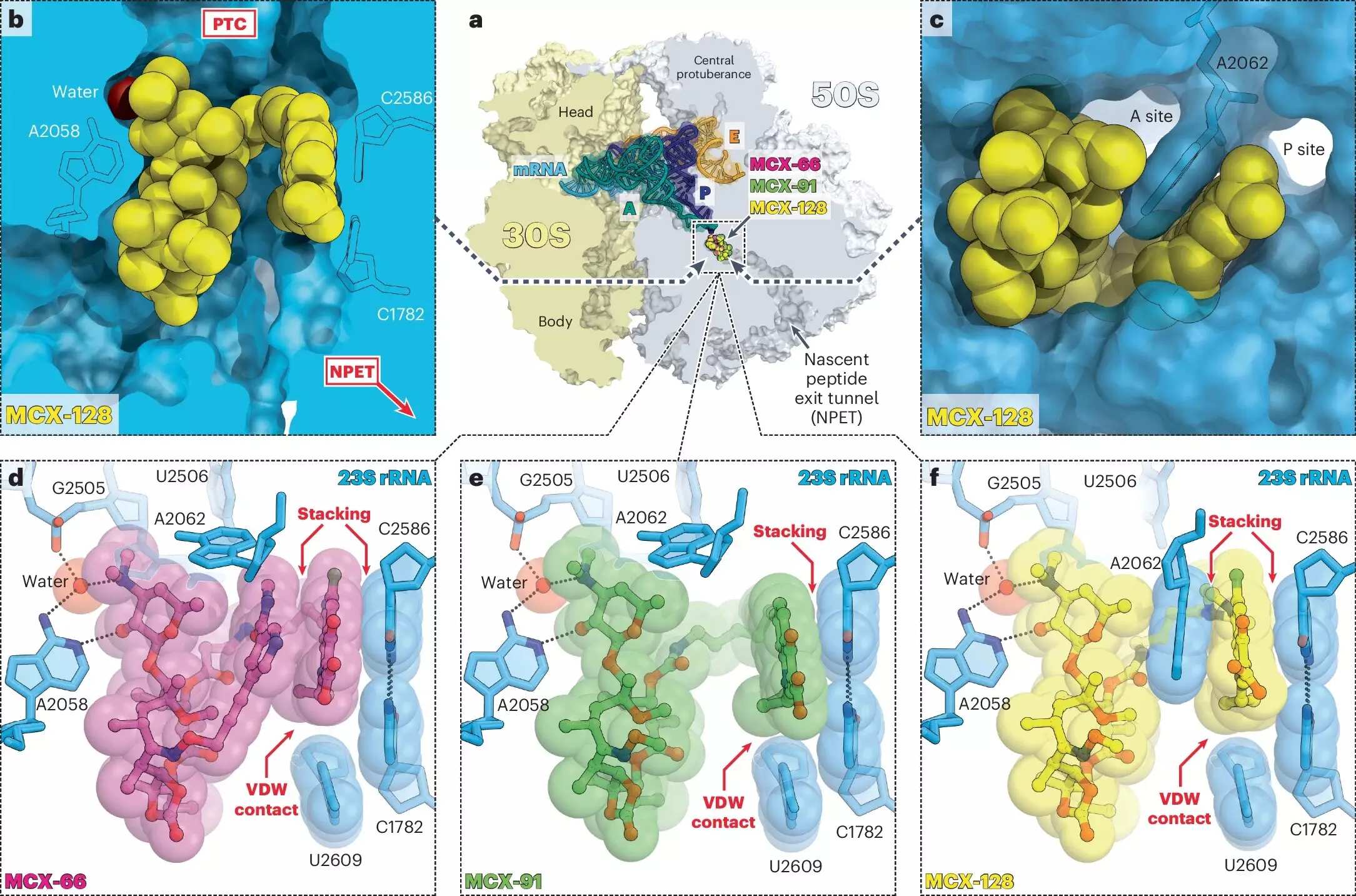Antibiotic resistance has emerged as one of the most urgent public health crises of our time. With bacteria evolving faster than we can create effective treatments, many infections that were once easily curable have become almost untouchable for modern medicine. As a society, we are at a critical juncture where the paradigm of antibiotic therapy needs a dramatic overhaul. New approaches that do not merely mimic existing solutions but adopt innovative strategies are essential. Recent research from the University of Illinois Chicago introduces an intriguing prospect in this inevitable struggle—synthetic antibiotics known as macrolones, which show unprecedented efficacy against bacterial defenses.
Understanding Macrolones: A Dual-Target Assault
Macrolones are a fascinating class of synthetic antibiotics that employ a unique mechanism of action by targeting two distinct cellular processes within the bacteria. Unlike conventional antibiotics that typically focus on a single target, these groundbreaking compounds disrupt protein production while simultaneously corrupting the structural integrity of bacterial DNA. This dual action exponentially increases the difficulty for bacteria to develop resistance. To comprehend the significance of this discovery, one must consider the fact that for bacteria to successfully resist the effects of macrolones, they would have to evolve defenses against two independent mechanisms concurrently—an exceedingly unlikely scenario.
Distinguished professor Alexander Mankin, one of the lead researchers, underscores this innovative approach by stating, “The beauty of this antibiotic is that it kills through two different targets in bacteria.” By striking at multiple vulnerabilities, macrolones supercharge the chances for effective treatment across a broader spectrum of bacterial infections.
Scientific Insights: The Groundbreaking Research
The research team at UIC, which includes experts from various fields such as biological sciences and pharmacy, meticulously explored how these synthetic antibiotics interact with bacteria. It was revealed that the macrolones bind to the ribosomes—essentially the protein-making organs of bacterial cells—more effectively than many traditional antibiotics, including those that are commonly known to be resistant. Notably, these macrolones showcase the remarkable ability to block ribosomes from drug-resistant strains, crucially failing to activate resistance genes that would typically arise during bacterial exposure to antibiotics.
Their experiments showcased a standout candidate, a macrolone that effectively inhibited both protein production and DNA replication at lower concentrations, amplifying its potential as a frontline defense against resistant bacteria. Yury Polikanov, an associate professor involved in the study, emphasized the importance of this dual-impact approach, allowing for the near-impossibility of a straightforward genetic mutation facilitating bacterial survival.
Interdisciplinary Collaboration: An Engine for Innovation
One of the noteworthy aspects of this research is the interdisciplinary collaboration that brought together experts from various fields within the UIC Molecular Biology Research Building. This collaborative culture fosters not only innovation but also fundamental science discoveries that can significantly impact clinical applications. The synergy between the colleges of medicine, pharmacy, and liberal arts is emblematic of a holistic approach to problem-solving in scientific research.
Mankin poignantly highlights the trajectory of this work, suggesting, “The main outcome from all of this work is the understanding of how we need to go forward.” Such visionary insights reflect the necessity for chemists and biologists to work hand in hand, optimizing macrolones to effectively target both critical bacterial functions.
Toward a New Era in Antibiotic Development
The introduction of macrolones represents not just a singular breakthrough but a potential turning point in how we conceive antibiotic treatments. As bacterial resistance escalates, the conventional wisdom surrounding antibiotic utilization must evolve. By adopting a multi-faceted attack strategy, macrolones set a precedent for future antibiotics that could circumvent the vicious cycle of resistance evolution that has plagued previous generations of drugs.
In a landscape increasingly defined by bacterial resilience, the promising mechanics of macrolones underscore an essential evolution in therapeutic strategies necessary to protect public health and combat infectious diseases. Scientists and healthcare professionals now stand at the brink of what could become a monumental shift in antibiotic therapy—a shift that hinges not only on new discoveries but an unwavering commitment to innovation and collaboration across scientific disciplines.

